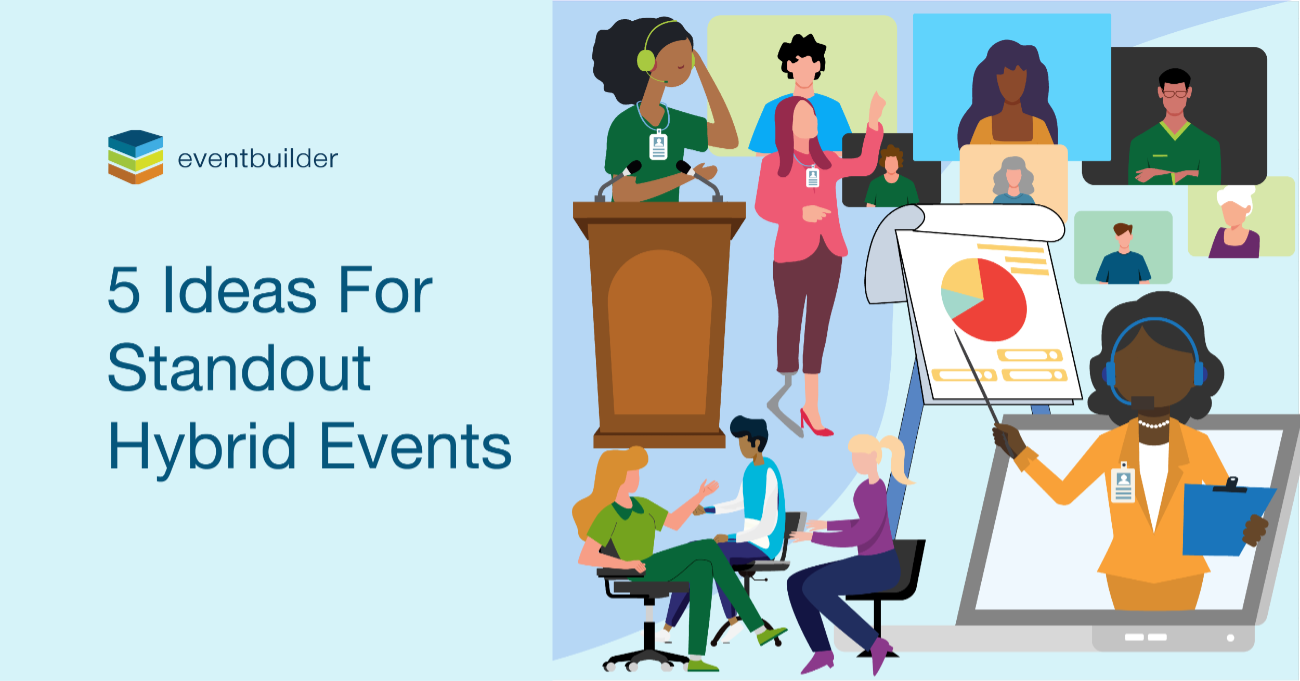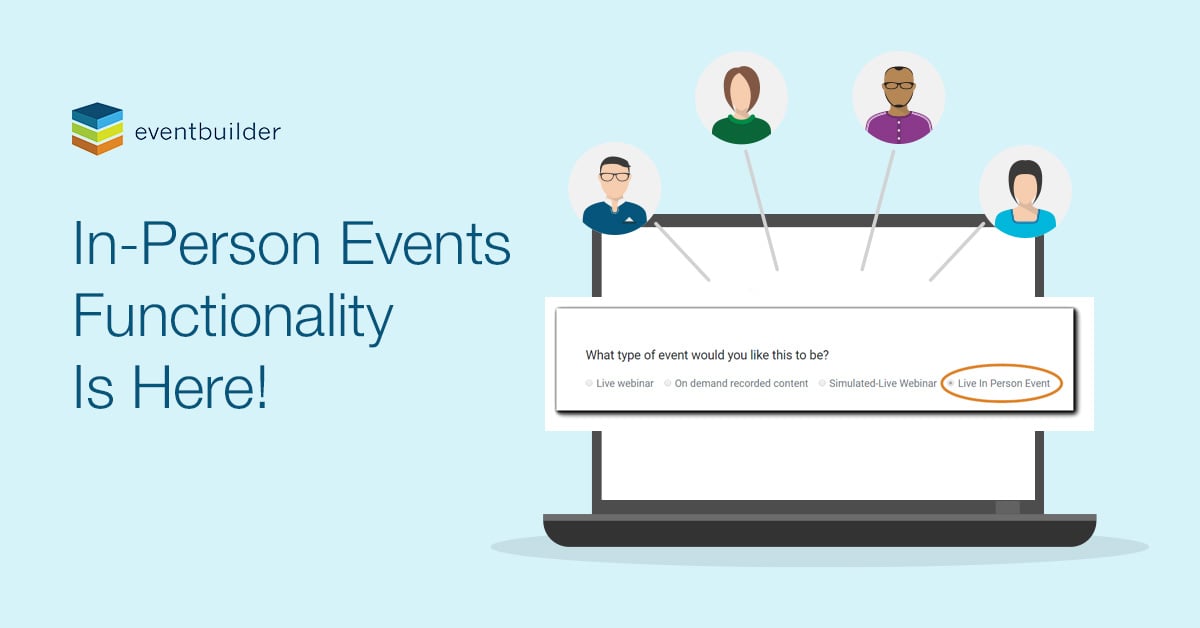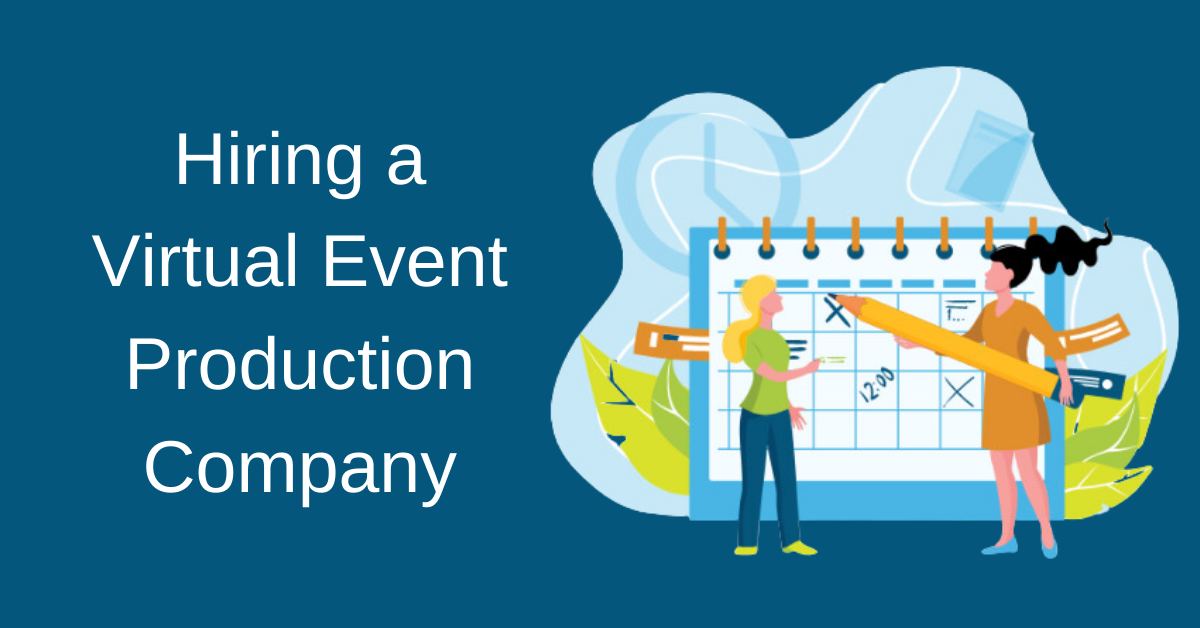The Hybrid Advantage: Standout Ideas For Planning and Delivery
Hybrid events blend the best of both virtual and in-person experiences, offering event organizers a unique opportunity to connect with a wider audience and amplify your event's reach. They've also emerged as a powerful tool for attendee engagement and accessibility. Reality check: logistically speaking, they can be challenging to pull off successfully. Ready to learn more about the advantages and disadvantages of hybrid events, the essential elements, and explore a few ideas for making your hybrid event really stand out?
Should I Host a Hybrid Event? Pros and Cons
Before you start planning a hybrid event, it's a good idea to consider both the sides of the coin to understand the bigger picture of what to expect and whether it's a good fit for your specific use case. Let's break it down:
Hybrid Event Benefits
- Expanded Reach - By accommodating both in-person and virtual attendees, hybrid events offer the benefit of connecting with a wider audience and maximizing participation.
- Increased Engagement - Hybrid events offer enhanced engagement opportunities, giving you the best of both virtual and in-person interaction.
- Flexibility and Scalability - Hybrid events also allow you to cater to a broader range of participants, including those with accessibility challenges, geographical limitations, or budget constraints.
- Greater Cost-Effectiveness - While there are additional considerations compared to a purely virtual event, hybrid events can be more cost-effective than traditional in-person events.
- Data-Driven Insights - Hybrid events generate a mountain of data, allowing you to analyze engagement metrics and refine your approach for future events.
Hybrid Event Considerations
- Increased Planning Complexity - Planning and executing a hybrid event requires meticulous planning and attention to detail. Planning for two separate audiences in drastically different venues can be a big challenge to pull off successfully.
- Technical Challenges - Speaking of challenges, ensuring seamless integration between the virtual and in-person audiences is critical in order to avoid technical glitches that can disrupt the event experience.
- Budget Management - There are additional costs associated with hybrid events, such as venue rental, equipment, catering, and additional event staffing.
How to Plan a Successful Hybrid Event
You've carefully considered your audiences, event goals, available resources, and budget, and have decided to go for it. Start here:
- Goals and Data Alignment - Your number one step in a successful hybrid event plan is deciding what you want your event to accomplish. Next, it's important to design your event's registration experience, pre-event communications, engagement strategy, and post-event surveys to align with your goals. Keep mind the separate considerations for each attendee type, such as accessibility and logistics, in mind.
- Virtual First - Design your event with your virtual attendees in mind first. There's a natural energy and flow with in-person events that are harder to replicate online, so work to create exciting, immersive virtual event experiences first, then integrate your in-person event components.
- Technology Heavy Lifting - Your venue needs to have the technological muscle to manage the load, from robust wifi at the physical venue to production equipment, such as lighting, AV, adequate power supplies/charging access for in-person attendees, etc.
- Pick Your People - Your virtual and ground-control crews are vital to the entire experience. Event staff for tech support, expert moderation, attendee assistance, and an on-site event production company can make or break your event. Choose wisely.
- Event Design For All - Accessibility isn't optional, for both in-person and virtual attendees. Plan for both with signage, closed captioning, and other inclusive features.
Best Practices for Hybrid Event Execution
As you implement your event plan, keep in mind some of the essential components you need to deliver a successful event for both audiences. These include:
- Interactive Workshops and Breakout Sessions - Offer engaging workshops and breakout sessions, catering to both in-person and virtual attendees. Take advantage of interactive tools that foster audience participation and a sense of community.
- Live Q&A Sessions with Remote Speakers - Invite both in-person and remote speakers to host your Q&A sessions, and leverage your event tech to ensure remote speakers can participate and engage with both audiences seamlessly.
- Networking Opportunities for All - One of the most-missed elements of virtual events is the face-to-face networking that in-person events offer. While traditional networking might be easier for in-person attendees, you can plan networking opportunities for your virtual attendees by utilizing dedicated online networking platforms, virtual breakout rooms, and social media to facilitate connections.
- Live Polling and Gamification - Boost engagement by incorporating live polling and gamification elements throughout your event. Encourage participation from both in-person and virtual attendees, fostering a sense of interactivity and excitement.
- Hybrid Event Content Repurposing - Don't let your hybrid event content go to waste! Repurpose key presentations, Q&A sessions, and workshop recordings into valuable resources for both in-person and virtual attendees after the event. An in-person attendee who missed a session will appreciate being able to access the recording.
 For more in-depth content on this subject, check out our
For more in-depth content on this subject, check out our
Virtual Event Planning and Strategy Learning Hub
Bridging the Digital Divide: Five Innovative Ideas
One challenge we've seen with hybrid events: balancing the energy and buzz of the in-person gathering with ensuring virtual attendees are engaged and feeling equally valued and included. Adding elements like these before, during, and after your hybrid event will help bridge that gap by setting you apart from the crowd and generate positive buzz:
1. Virtual and In-Person Event Ambassadors - Who are your influencers? During your planning phase, consider who you might tap to be the "faces" of your event; one in-person ambassador and one virtual ambassador (or more, depending on the size of your event). Ambassadors can assist you in keeping everyone informed of changes, delays, technical difficulties, or other issues, and help build connections between your two audiences.
2. Pre-Conference Connection - Get your virtual and in-person attendees mixing and mingling ahead of your event. Schedule an online networking event for all registrants before your conference, such as a virtual business card exchange, to get things started and to introduce your ambassadors.
3. The Power of FOMO - Mini, or "teaser" virtual sessions highlighting your conference content leading up to your event can help build excitement and set the tone for engagement during the actual event. (Hint: This is a perfect opportunity to try simulated-live mode!)
4. Mix & Match Panel - For panel discussions, gather both in-person AND online presenters. Having both demonstrates that when you said it was a hybrid event, you meant it - top to bottom.
5. Blended Breakouts - Invite your virtual attendees to join any breakout sessions happening in-person; make certain they feel as included and welcome as active participants. Also, train your session presenters and moderators on best practices for facilitating engagement with a blended audience.
Bonus tip: Ease up on lengthy presentations—plan for interaction breaks about every 5-8 minutes to keep both of your audiences engaged.
The Future is Hybrid
Hybrid events can be the perfect solution if you're looking to expand your reach, boost engagement, and take advantage of the benefits of both in-person and virtual experiences. There are so many creative ways to design hybrid events for maximum attendance, engagement, and, ultimately, ROI. EventBuilder can help you build and deliver hybrid events that work. Let's get you started today!
You May Also Like
These Related Stories

The Hybrid Advantage: Ideas for Standout Hybrid Events

(Updated For 2021) In-Person Events Functionality!




No Comments Yet
Let us know what you think